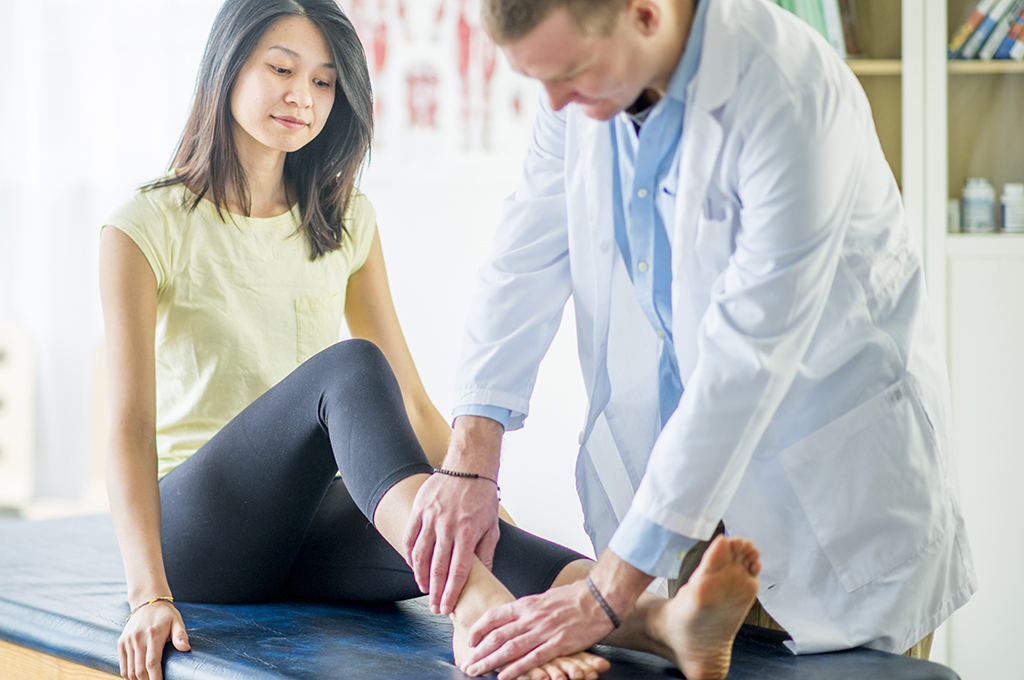
Image Source: Google
Introduction
Our ankle and foot play a crucial role in our everyday movements, especially when it comes to walking, running, and overall mobility. Understanding the complexities of these body parts can help us optimize our stride and prevent injuries.
Ankle and foot specialists have valuable insights into how to unleash the power of our stride for improved performance and overall well-being. If you are looking for the best ankle and foot specialists then, you can contact Meleca Foot & Ankle.
The Anatomy of the Ankle and Foot
Before we delve into optimizing our stride, let's take a closer look at the anatomy of the ankle and foot:
Ankle
- The ankle joint is comprised of three bones: the tibia, fibula, and talus.
- Ligaments provide stability to the ankle joint, including the anterior talofibular ligament and calcaneofibular ligament.
- The Achilles tendon connects the calf muscles to the heel bone and plays a vital role in plantarflexion.
Foot
- The foot is composed of 26 bones, 33 joints, and more than 100 muscles, tendons, and ligaments.
- The arches of the foot (medial, lateral, and transverse) help distribute weight and absorb shock during movement.
- The plantar fascia is a thick band of tissue that supports the arch of the foot and helps with propulsion.
Common Ankle and Foot Issues
Despite their importance, the ankle and foot are susceptible to a variety of issues that can impact our stride and overall mobility. Some common problems include:
Plantar Fasciitis
- Caused by inflammation of the plantar fascia, leading to heel pain.
- Treatment may include stretching exercises, orthotics, and physical therapy.
Ankle Sprains
- Occurs when the ligaments supporting the ankle are stretched or torn.
- RICE (Rest, Ice, Compression, Elevation) is often recommended for initial treatment.
Achilles Tendonitis
- Inflammation of the Achilles tendon, resulting in pain and stiffness.
- Rest, physical therapy, and orthotic devices can help alleviate symptoms.
Optimizing Your Stride
Now that we understand the anatomy and potential issues related to the ankle and foot, let's explore how we can optimize our stride for better performance and reduced risk of injury:
Proper Footwear
- Choose shoes that provide adequate support and cushioning for your foot type and activity level.
- Replace worn-out shoes regularly to maintain proper alignment and shock absorption.
Strength and Flexibility Exercises
- Include exercises that target the muscles of the ankle and foot, such as calf raises, toe curls, and ankle circles.
- Stretch regularly to improve flexibility and prevent muscle tightness.
Proper Walking and Running Technique
- Focus on landing softly on your midfoot or forefoot to reduce impact on the joints.
- Maintain an upright posture and engage your core muscles for stability.
Seeking Professional Help
If you're experiencing persistent pain or difficulty with your stride, it's important to consult with ankle and foot specialists for diagnosis and treatment. These experts can offer personalized recommendations to address your specific needs and ensure optimal function of your ankle and foot.
By taking care of our ankle and foot health and leveraging the expertise of ankle and foot specialists, we can unleash the full power of our stride and enjoy improved mobility, performance, and overall well-being.